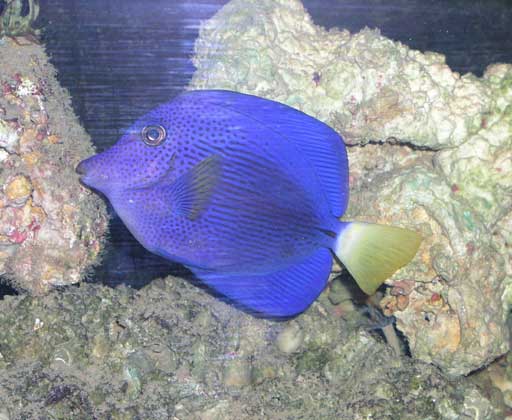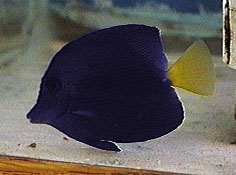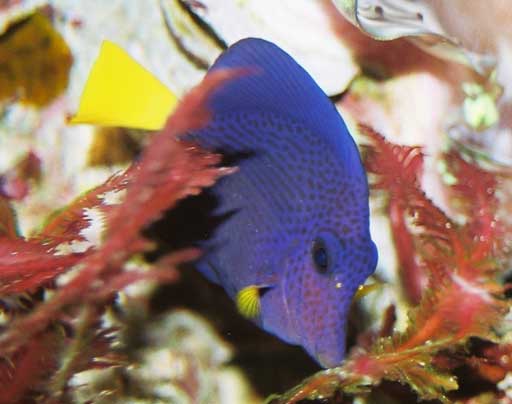
![]() FINS
Home
FINS
Home
![]() FAQs
FAQs
![]() Index of Species
Index of Species
![]() Articles
Articles
![]() Directories
Directories
![]() Glossary
Glossary
![]() Software
Software
![]() DIY Plans
DIY Plans
![]() Gallery
Gallery
![]() Mailing Lists
Mailing Lists
![]() Links
Links
![]() About FINS
About FINS
This index has several hundred pictures, and it's still growing. If you have pictures to contribute which you have taken yourself, I'll happily add them to the database, and give you appropriate credit.
Zebrasoma xanthurus
Common name: purple tang
 Photo by Mark Rosenstein / Active Window Productions, Inc. |
 Photo by Mark Rosenstein / Active Window Productions, Inc. |
 Photo by Hiroyuki Tanaka |
Zebrasoma xanthurus is a Red Sea tang, and is similar in ecology (and hence aquarium care) to the popular Yellow Tang. The Red Sea Purple tang is quite popular due to its highly intense purple color. It also has a pattern of dots and stripes that is subtle, but beautiful. Unfortunately, it is a very expensive fish, probably due to the high cost of shipping. I have a small (2-3") specimen in my reef tank. It browses filamentous algae, but does not eat other algaes as well as the yellow tang. I also hear that they are the most aggressive members of their genus, so they probably cannot be kept in small groups of tangs.
Purple Tangs are usually collected as adults, making shipping quite expensive (which is reflected in the price tag on the fish!). If a quality specimen is selected, Z. xanthurus will thrive well in a large aquarium of at least 100 gallons. Be careful in keeping them with delicate inverts, though, because even though this is an herbivorous species, it has sharp teeth and is potentially dangerous to some inverts.Take care in mixing the Purple Tang with other surgeons!! I once kept a blue tang, sailfin tang, yellow tang, and purple tang in a 150-gallon tank and they only *marginally* coexisted. In any case, provide plenty of rockwork so all the fish can stake out their own territories out of sight from the other fish. As with all tanks with surgeons in them, macroalgae will be eaten much faster than it can be propogated, so leave it out of the scenaria. Keep the lighting intense, however, to support a strong growth of microalgae, which tangs will eagerly devour.